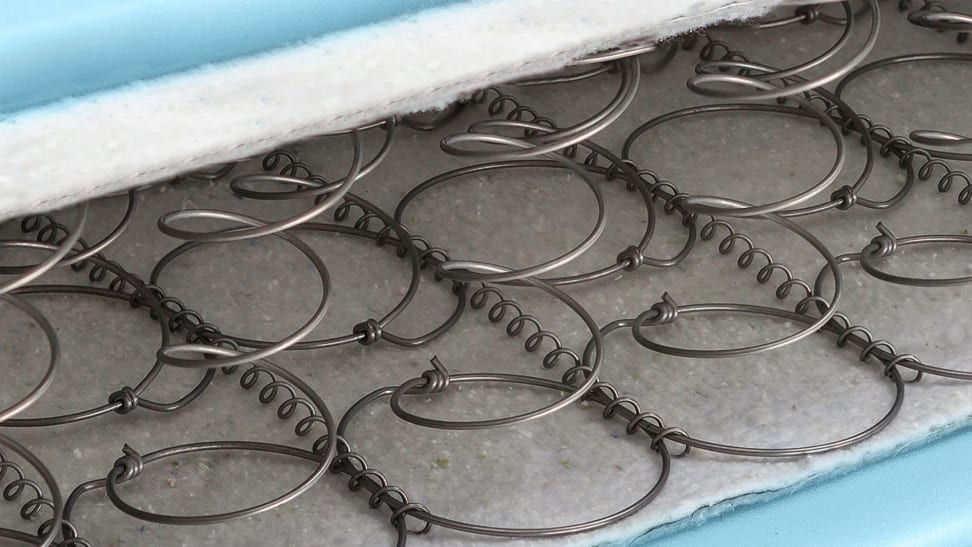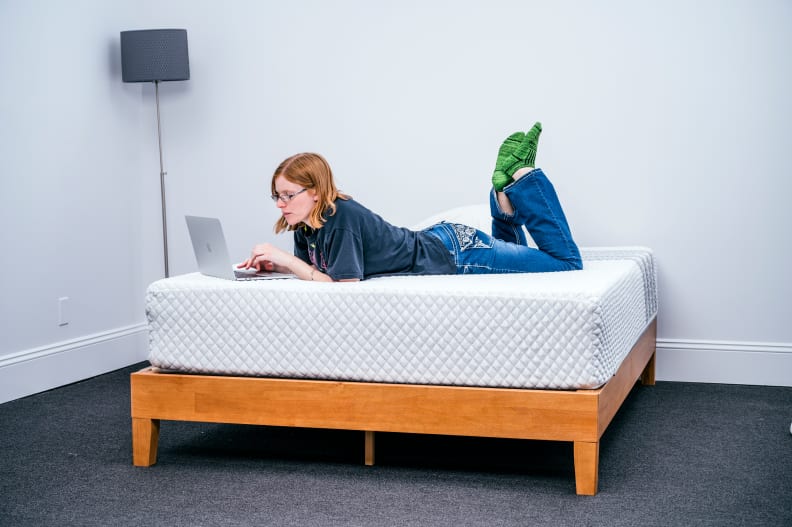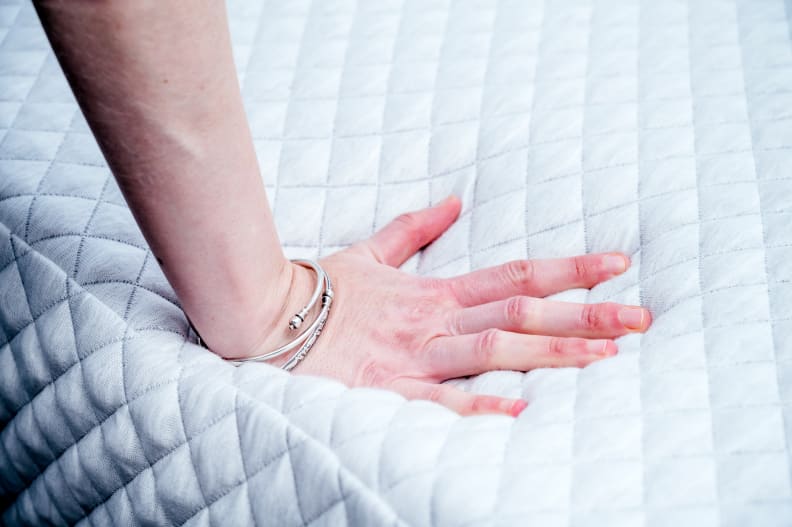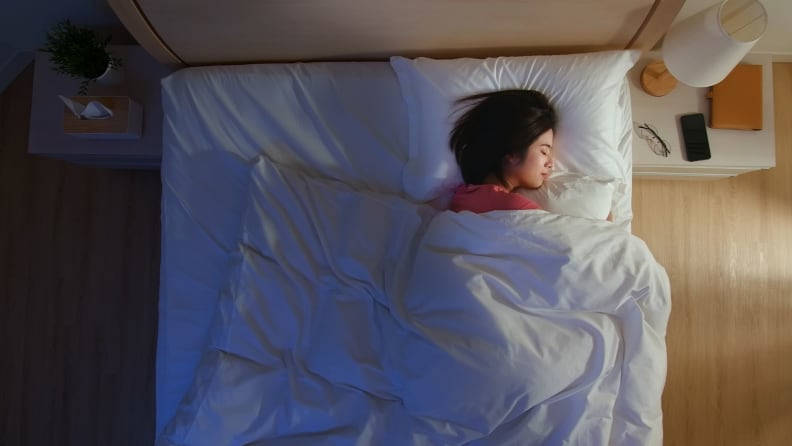What is a hybrid mattress, anyway?
Hybrid mattresses combine the best of both worlds to (hopefully) bring you your best sleep yet.
 Credit:
Getty Images / lindo12345
Credit:
Getty Images / lindo12345
Recommendations are independently chosen by Reviewed's editors. Purchases made through the links below may earn us and our publishing partners a commission.
As the sleep writer here at Reviewed, I spend a lot of time thinking about mattresses, and I routinely geek out about the benefits and drawbacks of their different materials, constructions, and the types as a whole. But there’s one mattress build that, in my opinion, has it all, in both a literal and figurative sense. Hybrid mattresses combine springs and foam to give you a sleep surface that's responsive but cushioned, supportive yet forgiving. They purport to bring the best of both worlds—and as someone who has slept happily on hybrids, I agree.
On the outside, hybrids look like pretty much any other mattress. They’re wrapped in a basic textile encasement (a.k.a. “ticking”) that’s made from fabric that may include polyester, tencel, wool, cotton, or microfiber. But within that encasement is where the magic happens. Every hybrid mattress has two key elements: springs and foam, but what that looks like varies across brands and models.
Hybrid mattresses have a spring foundation

Hybrid mattresses start on with a springy, supportive foundation.
The base of a hybrid mattress is composed of springs, like the innersprings found in traditional mattresses. The springs provide support and a bouncy, resilient sensation to the mattress—as in, you’ll feel some rebound when you plop down on it. The springs can also make the mattress more adaptable to your body. They become more supportive when they compress under increased pressure, say, in response to your hips, while retaining their structural support beneath other areas that bear less weight, like the lower legs.
When I first learned about the hybrid mattress structure, I assumed there were maybe 20 to 50 springs—turns out there may be as many as thousands. A queen size Leesa Hybrid, one of our favorite mattresses overall, contains 1,041 springs. Meanwhile, a queen Tuft & Needle Hybrid has just over 2,500. This makes for a highly adaptable surface—think of it like one of those metal pin sculpture toys you’ve seen on desks in offices that you can press your hand into and the pins contour precisely to its shape.
The springs in hybrid mattresses are usually coiled metal, but some manufacturers use a specific type called “pocket springs.” Pocket springs are just individual springs tucked into their own little fabric pouch. The benefits and design rationale differ depending on the manufacturer. According to a customer service rep at Leesa, the design gives you “more targeted pressure relief … [the springs’ individual wrapping] will let them adjust to different pressure points on your body, giving you the best support.” Tuft & Needle uses pocket springs to bring you the same supportive sensation, with one additional reason: noise. According to a customer service rep, the pockets help prevent creaking over time and with use.
Many hybrids have just one layer of springs, but others, like the Leesa Legend, incorporate two or more layers of different sized springs. According to the Leesa customer service rep, the combination of springs in the Legend make the mattress feel more plush and give it a bit more bounce than the hybrid. (I have yet to sleep on the Legend, so I can't speak to that.)
Hybrid mattresses have a cushy foam surface

Atop the springs is foam that makes the surface forgiving and cushions you.
Of course, the springs aren’t the only element of hybrids (otherwise, what would they be a hybrid of?). Atop the responsive coils is foam. This differs from a traditional innerspring mattress, which uses layers typically of fiberfill to create a smooth surface. For a hybrid, the foam introduces superior contouring qualities, giving the surface a cozy sinking-in, hug-like sensation.
Hybrids may have just one solid layer of foam or multiple tiers that each have varying densities lending different characteristics to the sleep experience. For example, the Leesa Hybrid has two foam layers: a “memory foam recovery layer,” beneath a “comfort layer.” The lower recovery layer contours to your body to provide pressure relief, while the surface comfort layer is hole-punched to promote airflow, addressing one of the biggest concerns with memory foam mattresses: heat.
Memory foam tends to hold body heat in rather than dissipate it, which can be a major reason why some folks don’t like 100% foam mattresses. And that leads us back to another benefit of the hybrid structure worth touting, which is that the innersprings used in hybrids purportedly can help regulate temperature while you sleep by promoting airflow.
Why you should consider a hybrid mattress

I think that most people will find hybrid mattresses offer the perfect balance of support to cushion and cradling.
In my testing, hybrids provide a great balance of support and cushion. The springs don’t leave you feeling as though you’re soaking into or sagging through the entire mattress itself—they give it some loft and resiliency that many all-foam mattresses don't have. The foam on top, however, guarantees you won’t wake up with an ache in your shoulder from a pressure point aggravated by sleeping on your side all night. In my experience, these attributes indeed lend to a better night's sleep.
Though the basic structure is more or less the same across hybrids, there are firmer options, like the particularly solid DreamCloud, and more balanced ones, like the Leesa Hybrid, which I personally adore. I have a hard time imagining someone who wouldn’t find the hybrid structure comfortable, unless they have a strong personal preference for pure foam or solely innerspring beds.
The only, albeit significant, downside of hybrid mattresses is the price. They tend to be more expensive than solid foam or innerspring options, respectively. The Leesa Hybrid in queen size is $1,699 full price, and the queen Leesa Legend lists for $2,199. Even with the company’s frequent sales, I’ve never seen the price for a queen-size Leesa Hybrid dip below $1,300. The DreamCloud is more affordable for a hybrid, with a queen ringing up at $1,199 and sale prices dipping into triple digits. But at the end of the day, I think that the comfort, balance, and support that hybrid designs bring to your sleep make this investment money very well spent.
I could go on about why hybrids are the best option for many, but I won’t. I’ll just say this: After I raved about the Leesa Hybrid for weeks to anyone and everyone who would listen, both my editor and my parents bought one, and they’ve not looked back. I, on the other hand, still do: the Leesa was among the first mattresses I tested, and while there have been other awesome beds and great hybrids in the interim, I still yearn for it at times. I didn’t think the hybrid design could be even more perfect until I slept on that mattress. Now, as you can tell, I’m absolutely sold.

